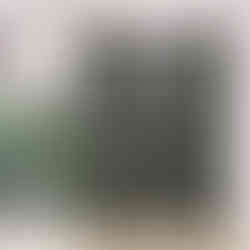Biomythography: Currency Exchange reviewed by Jackie Bell Johnson of Art and Cake
- Chris Christion & Jessica Wimbley

- Sep 7, 2016
- 3 min read
Art and Cake is a contemporary art blog with a focus on the Los Angeles Art scene. Exerts from the review are taken from Biomythography: Currency Exchange opens at Claremont by Jackie Bell Johnson on Art and Cake. You can read the full article here.
Currency Exchange is the third in a series of Biomythography exhibitions co-curated by Jessica Wimbley and Chris Christion. The show includes artists from southern California as well as several emerging artists from Costa Rica. The termbiomythography was coined by warrior poet Audre Lorde; it means “combining elements of history, biography, and myth.” This concept is the springboard for the exhibitions and offers the artists a “richer language in articulating and contextualizing their work.”
The idea to explore it as a curatorial project came from a lecture Wimbley gave at Chapman. “The term really resonated with the class, which lead me to believe there is something to biomythography and its relation to visual arts.”
The artworks in the show all have a sense of self portrait, but much deeper than that, as if you are viewing the generations of familial past of that person. These works are a visual storytelling, relaying past experiences, exaggerating/removing/including details to alter context for relevance. They are a parallel to passing down history orally. And as in oral tradition, these explorations evolve into myth and legend, though the outcome remains sincere.
Martin Robinson’s Untitled 2016 is a painting made with chalkboard paint and chalk, directly on the wall of the gallery. The deep matte black paint sinks into the wall creating a vortex, implying depth that pulls you into the doorway of the painting. The chalk drawing on top is a mix of imagery: indigenous African people and wallpaper-style scrolls and flourishes surround an image of Madonna and child, portrayed as African. Underneath is written “El Negrito: Productos Esotericos Y Reli….” (That last word is obstructed by figure, but my guess is “Reliquias”). Translation- The Black: esoteric products and relics. The phrase reads as an advertisement, souring the beauty of the image.
I remember/I return is a series of works by Elisa Bergel Melo. Two are included in this show, a video and collection of photos. The group of black and white photos hung at different depths from the gallery wall, some of the photographs casting shadows. The imagery is altered. Scenes from childhood visually skip and repeat within the photographs. The shadows create gray and black rectangles on the wall, visible among the photos. They act as place holders for memories out of grasp. The accompanying video piece presents similar imagery drifting in and out of abstraction in real time.
Glen Wilson’s Broken Record series is of items that anyone could find while taking a stroll down a neighborhood street. They are formally displayed as more as evidence than artifact. Close by is Wilson’s chain-link sculpture, the fence gates hung like street signs from an aluminum pole that goes all the way to the ceiling. Shredded photographs are revived by being woven into the chain-link, scenes perhaps from that same walk. The use of the gates play with your access to the imagery, acting as both barrier and support. The images themselves are of sun-drenched people in daily-life scenes in the city.
FILTER by Chuck Feesago is a multimedia presentation: a sculpture of orange sticks, string, iridescent silver paper, and cardboard -all made kinetic by the projection of night traffic passing through to the wall behind the piece. The form has an architectural logic to it, with its weight placed on cardboard blocks creating a clearance underneath. It has a sense of a camp or child’s fort and encouraging attempts to walk through it (as many gallery goers tried to do). The sculpture glitters in the light of the video, its angled lines in between erecting and collapsing. The city scape is always in flux and us Angelinos will be witnessing a lot more growth skyward now revisions to restrictions have been made. In the context of this show, FILTERrepresents the larger-than-life feel living in a highly condescended, ever growing, sea of lights and ads environment the city scape is, and the nostalgia that is generated for the past when we view the new. The piece also hints at the consequences of those bright lights: tucked away along the side is a small projection of an outdoor scene cropped by palm trees an ode to something that was lost.
You can see Currency Exchange at Claremont Graduate University through September 16th 2016. If you would like to investigate further the concept and exhibition series of biomythography, please visit http://www.biomythart.com













Comments